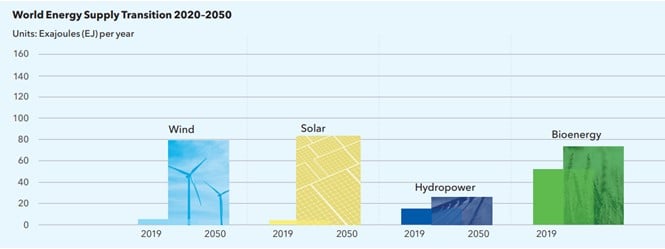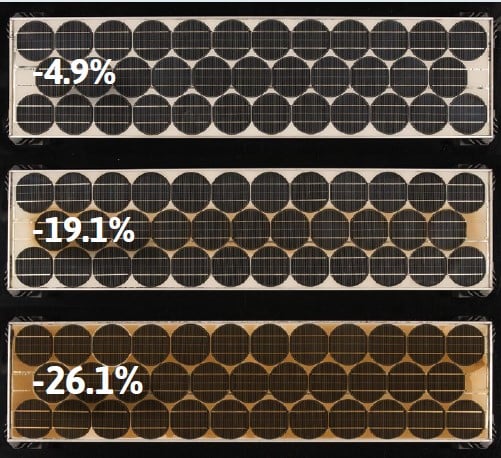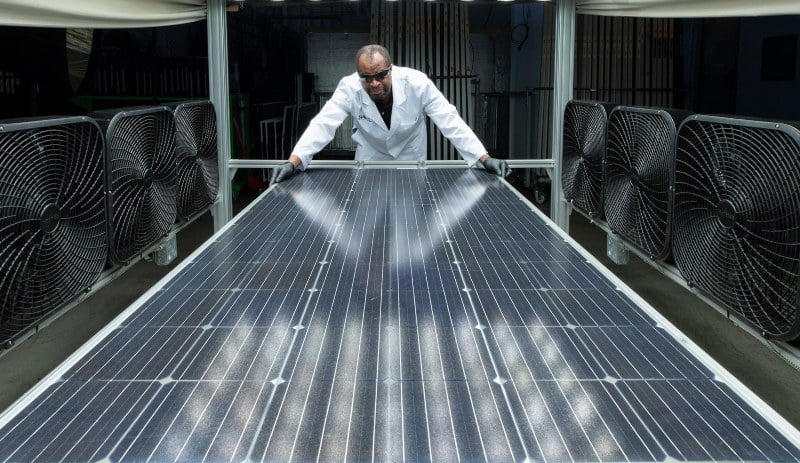Capturing and capitalizing the power of the sun

In a single hour, the sun gives us more energy than the entire world consumes in a year. Just think about that for a second. Potentially, we could use it all – for free! So, if we are to decarbonize our power supply, solar energy is a winner. No wonder the solar industry has seen unprecedented growth in the past decade; currently, the amount of new installed power (new installations) grow at 22% per year as reported by IRENA (International Renewable Energy Agency). Plus, next to being one of the most important sustainable energy solutions, solar energy offers great business opportunities if you have the proper data available.
Solar 10 times bigger
“The main goal for the future of our planet is a drastic reduction of the CO2 emissions”, says Luca Votta, Global Business Sector Leader Renewable Energy at Kiwa. “Based on government policies and scientific analyses all over the world, it’s broadly agreed that we can expect an enormous growth in the contribution of solar energy to the total production mix for renewable energy installations. IRENA predicts that solar and wind will represent 69% of grid-connected power generation, and fossil power just 13%, by 2050.”
Luca continues: “It is very clear that solar and wind will be the main drivers for global decarbonization in energy production. Consequently, the solar energy market size by 2050 could be over 10 times bigger than today. At the same time, hydrogen and electrical storages will be the main drivers for the decarbonization of the power utilization business.”


Graphic: Main trends of the World Energy Supply Transition between 2020 and 2050. Source: DNV's Energy Transition Outlook 2021.
Cheapest energy source
Luca cites the article “Why did renewables become so cheap so fast? And what can we do to use this global opportunity for green growth?” from “Our World in Data”, which attempts to explain what is going on. “The levelized cost of energy (LCOE) of electricity from solar energy declined by 89% over the last 10 years; in 2009, electricity from utility-scale solar photovoltaics cost $359 per MWh. In 2019 the price was $40. Such a reduction in just one decade is unique; it never happened before. And it made solar the cheapest energy source on our planet.”
How did this happen? Luca says: “Well, since 1976 the average price of a solar modules declined with 99.6 percent. PV modules are the main component of a PV power plant. The more competitive the price of solar panels becomes, the more advantageous solar energy becomes as a source of energy production. The so-called ‘learning effect’ in solar technology is incredibly strong: while the installed capacity increased exponentially, the price of solar modules, including batteries and electricity storage, declined exponentially.”
Quality, reliability, return on investment
Kiwa is in the forefront to help businesses accelerate the transition to renewable energy. Our TIC services help companies that are active in the solar energy market, for example manufacturers of PV modules and inverters and components, investors, banks, asset owners and developers, but also public institutions. Luca says: “Kiwa can help solar manufacturers to increase the quality of products and help investors decrease and mitigate risks to improve their return on investment. Take the Product Qualification Programs (PQPs) as developed by PV Evolution Labs (PVEL), part of Kiwa since May 2021. PQPs are comprehensive suites of performance and extended reliability tests that provide important data about equipment like PV modules, inverters and storage solutions.”
Jeff Cleland from PVEL has been a project manager in the solar business for 10 years and witnessed the developments up close. “It is truly exciting that prices are dropping rapidly and, simultaneously, that renewable energy technology is improving at record speed”, he comments. “These advancements are crucial to global efforts to decarbonize. Yet there are risks to rapid change. A truly green economy can only be achieved when our renewable energy assets operate as expected in the field.”
That’s because, as Jeff puts it, “Not all solar panels, batteries and inverters are created equal. Even small differences in the bills of materials of different products can greatly impact their behavior in the field. This in turn has a giant impact on the financial performance of any given solar project. See, for example, the PV modules in this picture below. They were installed in Europe’s oldest grid-connected solar power plant and have nearly identical bills of materials. They were produced at the same time, marketed under the same model name, and manufactured by the same company. However, different formulations were used for the encapsulant.” Jeff continues: “That seems only a minor issue. But after thirty-five years of field operation, PV modules with one formulation had 20% higher power output than the other. I would call that a big difference.”

It’s PVEL’s mission to support the worldwide PV buyer community by generating data that accelerates adoption of solar technology. Jeff adds: “Our testing helps companies determine which bills of materials they will invest in – and which ones they will not. Our focus is on helping solar investors and project developers select equipment that they are confident will perform as expected in the field. Our PQPs provide this important data about different types of equipment. We design them using feedback from our manufacturing clients, but more importantly our downstream partners who invest in solar power and deploy PV equipment. We update these PQPs regularly to ensure we continuously address the needs of the market.”
Benchmarking and scorecards
PVEL’s testing is consistent from product to product, so that buyers can benchmark different products and choose the technology that is best suited for their project’s environmental conditions and financial requirements. Explains Jeff: “Every year, we produce Scorecards that identify products that perform the best in our PQPs. Buyers can use these Scorecards to select their equipment because they want to reduce the risk of underperformance or failure in the field. Investors want dependable, reliable revenues. They want to see data that gives them confidence in their return on investment before they finance a project. That’s how PVEL’s data drives the adoption of advanced, low-cost solar PV technology that is needed everywhere around the world.”

More information
Learn more about our services in the field of Solar.
 |
 |
| Luca Votta, Global Business Sector Leader Renewable Energy at Kiwa. | Jeff Cleland, Project Manager at PV Evolutions Labs (PVEL). |
Stories from around the world
Would you like to know how our Kiwa colleagues use their expertise to help shape a better, more sustainable and fair world?